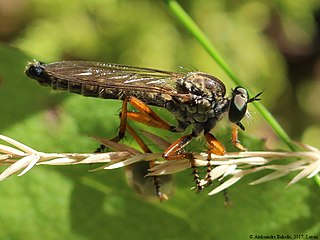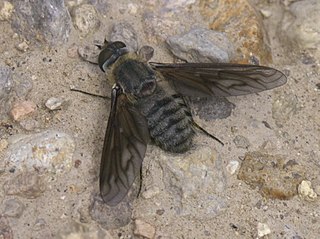
The California gull is a medium-sized gull, smaller on average than the herring gull, but larger on average than the ring-billed gull. It lives not just in California, but up and down the entire Western coast of North America, and has breeding ground inland.

Platystemon is a monotypic genus of flowering plants in the poppy family containing the single species Platystemon californicus, which is known by the common name creamcups. It is native to Oregon, California, Arizona, Utah and Baja California, and is found in open grasslands and sandy soils below 6,000 feet (1,800 m) elevation.

The California deermouse or California mouse is a species of rodent in the subfamily Neotominae in the family Cricetidae. It is the only species in the Peromyscus californicus species group. It is found in northwestern Mexico and central to southern California. It is the largest Peromyscus species in the United States.

Eulobus californicus, is a species of flowering plant in the evening primrose family known by the common name California suncup. It is native to California, Arizona, and adjacent northwestern Mexico, where it grows in scrub, chaparral, and desert plant communities.
Physocyclus californicus is a spider in the family Pholcidae, in the infraorder Araneomorphae . The distribution range of Physocyclus californicus includes the US and Mexico.
Aegialites californicus is a species of narrow-waisted bark beetle in the family Salpingidae. It is found in North America.

Neomochtherus pallipes, the Devon red-legged robber fly, is a species of robber fly in the family Asilidae.

Neomochtherus is a genus of robber flies in the family Asilidae. There are at least 140 described species in Neomochtherus.
Titanebo californicus is a species of running crab spider in the family Philodromidae. It is found in the United States.
Neomochtherus comosus is a species of robber flies in the family Asilidae.
Lepidanthrax californicus is a species of bee flies in the family Bombyliidae.

Poecilanthrax californicus is a species of bee flies.
Neomochtherus auricomus is a species of robber flies in the family Asilidae.

Aeoloplides californicus, the California saltbush grasshopper, is a species of spur-throated grasshopper in the family Acrididae. It is found in North America.
Cybocephalus californicus is a species of beetle in the family Cybocephalidae. It is found in North America. It can grow to be 0.95 mm to 1.30 mm in size.
Pachyrhinus californicus, the rusty pineneedle weevil, is a species of broad-nosed weevil in the beetle family Curculionidae. It is found in North America.
Neomochtherus latipennis is a species of robber flies in the family Asilidae.

Neomochtherus willistoni is a species of robber fly in the family Asilidae.

Neomochtherus geniculatus is a species of fly in the robber fly family, Asilidae.









